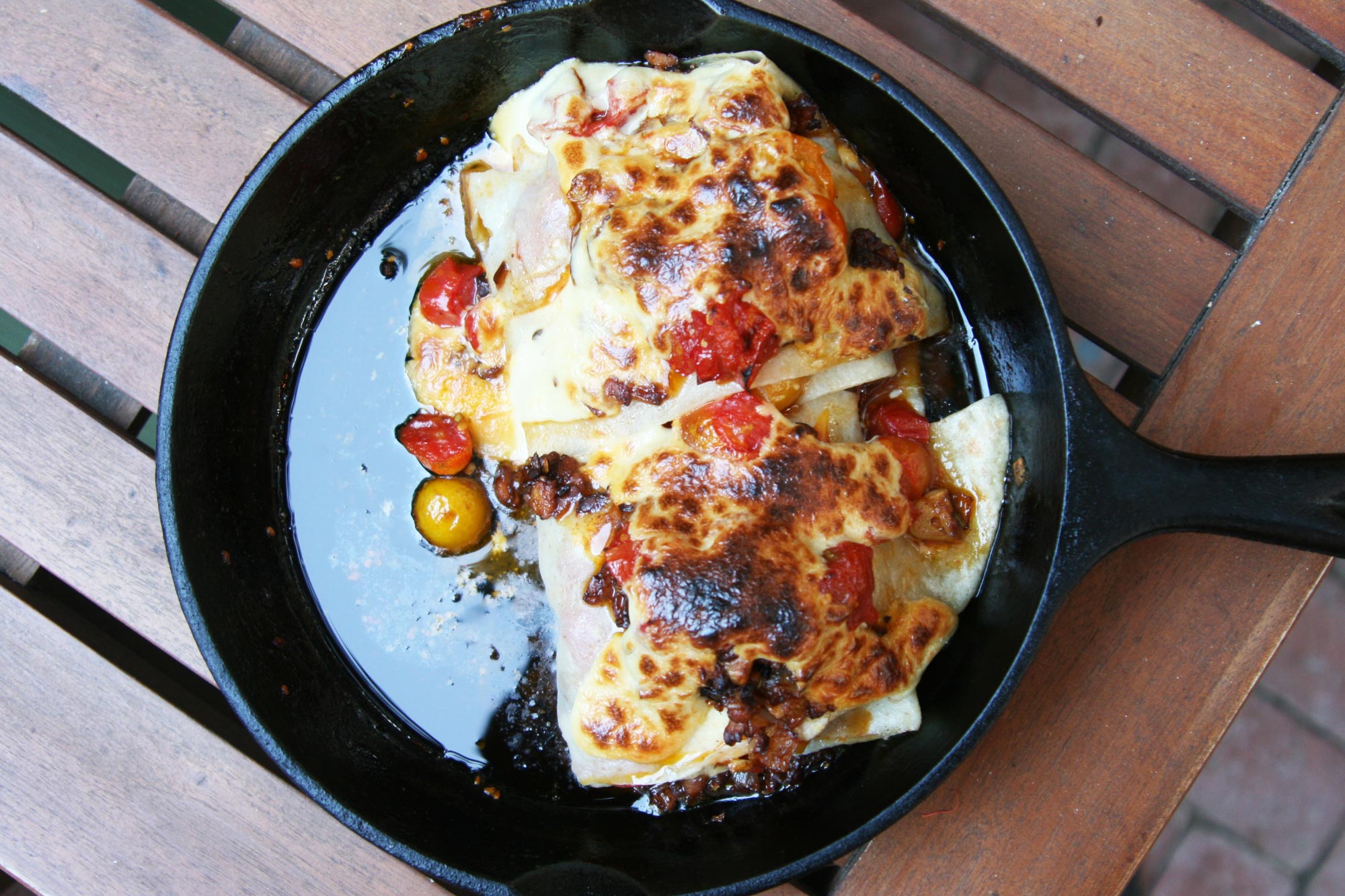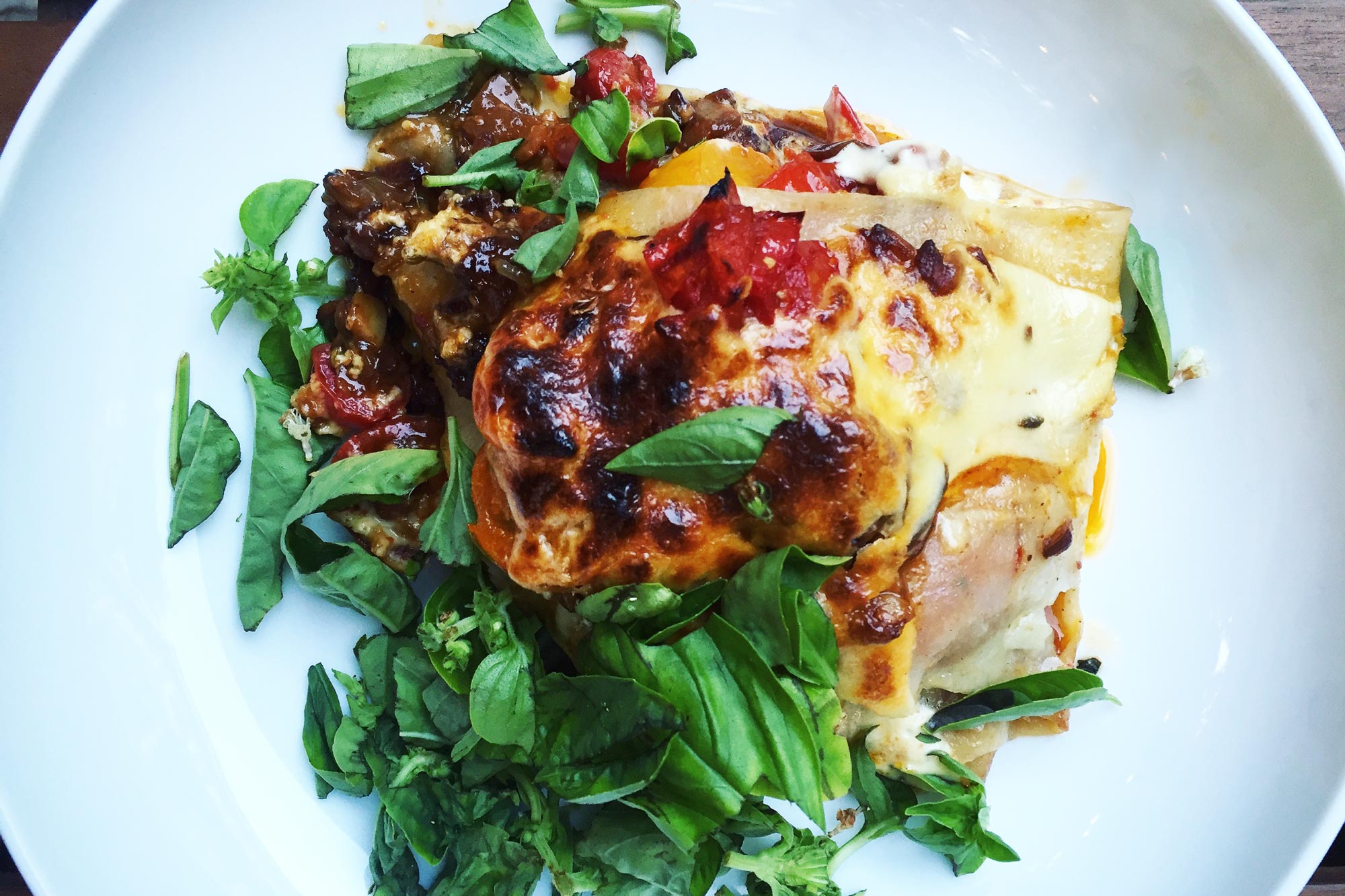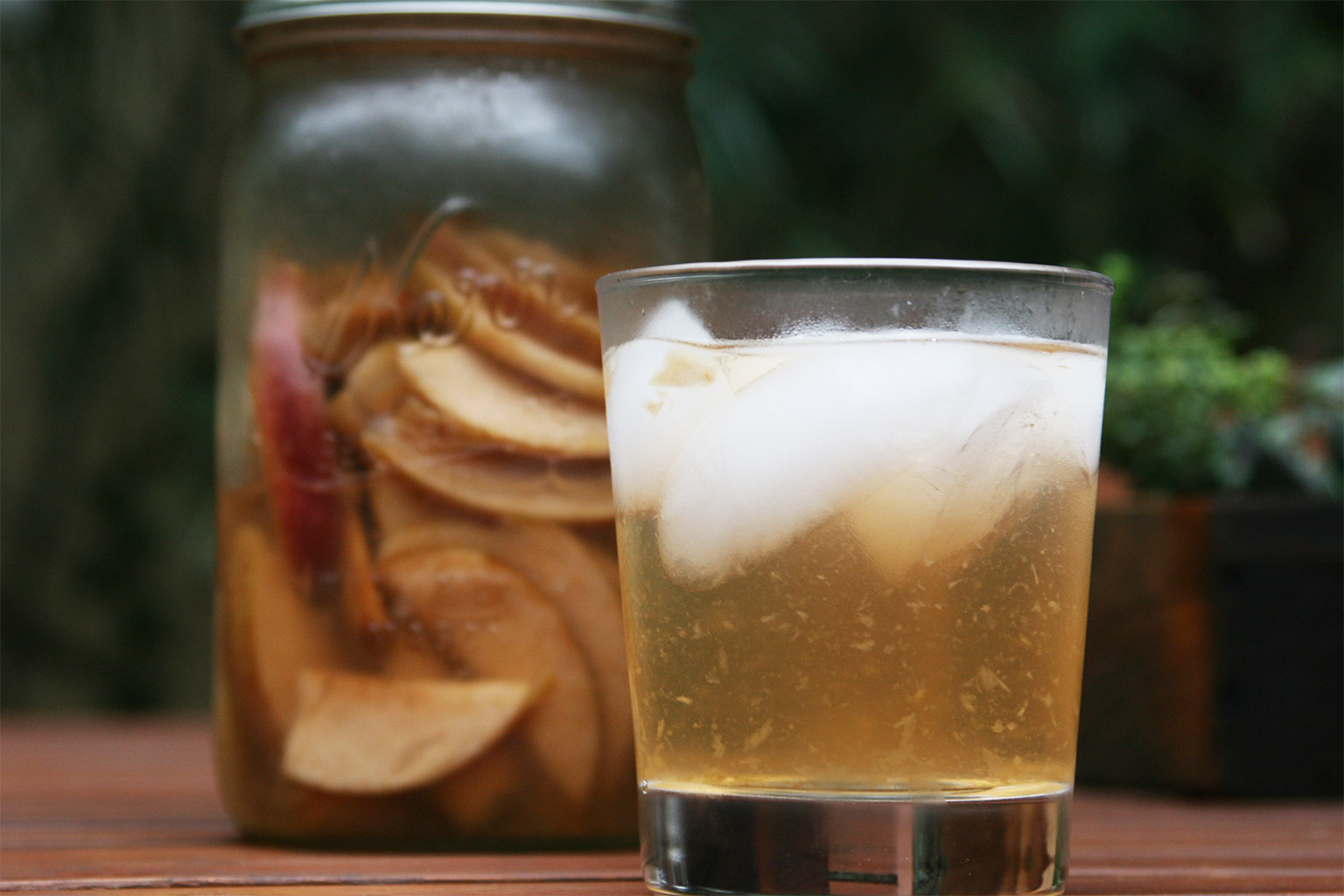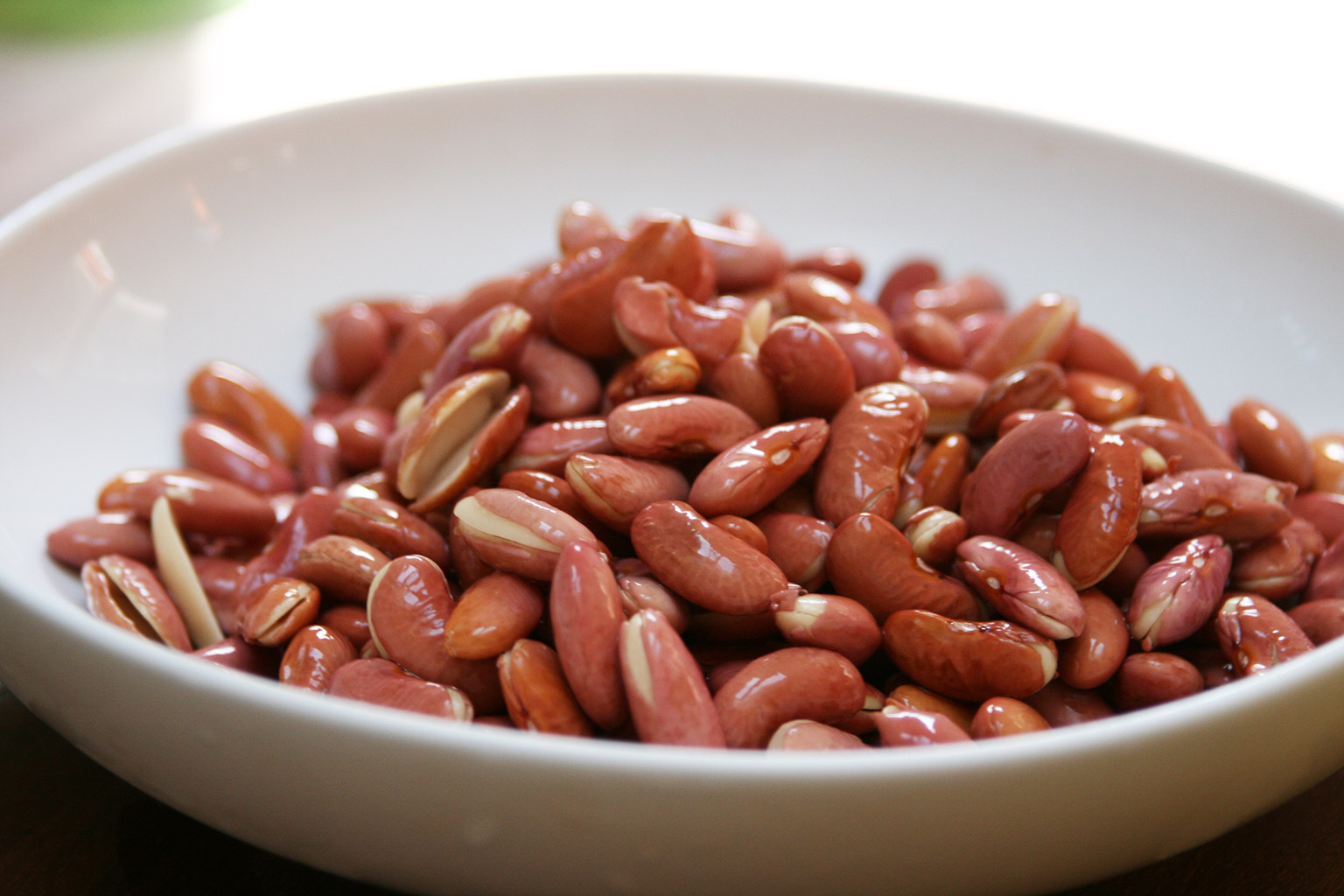We’re in the midst of both peak pepper season and peak tomato season here in southern California and it really shows on our weekly visits to the Hollywood Farmers Market. They’re so plentiful and so beautifully enticing, it’s been a war of the wills every Sunday not to walk away with armfuls of each.
For the peppers, we’ve gotten really into homemade hot sauces (more on those later); and for the tomatoes, you name it—heirloom tomato + cucumber salad in olive oil, fresh tomato sauces, roasting on the grill, eating them whole + raw. One farmer—a new one on the southern-most side of the market whose name I have yet to take note of—offers up more varieties of cherry tomatoes than I thought possible, all of which are sweet and fresh and irresistible.
This past Sunday, I came away with more than my fair share of these cherry tomatoes and was hit with a sudden craving for fresh pasta lasagna. What we ended up with was a simplified, deconstructed take on the traditional mainstay that was truly craveable. What’s more, it was really pretty easy to make and nice in terms of not having a giant tray of left-over lasagna a week after the initial cooking.
We’ve been trending towards writing up less strict, measured-out recipes of late on these pages and more just walking readers through the general concept of a dish and leaving the particulars to taste and individual creativity—this is no exception.
Not including the pot I used to flash-boil the pasta, I actually did this as a single-pan dish. Everything was farmers’ market sourced with the exception of the flour and tempeh (both of which actually would be options at our market, now that I think about it).
For the fresh pasta, first off, I assure you, it may seem daunting, but it’s really very easy to make and is so, so good. Many modern recipes don’t even incorporate semolina and instead just use fine quality white flour (we like King Arthur). The Kitchen has a good recipe that walks readers through it all pretty thoroughly; the only caveat for fellow vegans would be to bring in the ‘flax egg’ to sub in for the chicken eggs, detailed on this previous post. So, in the case of this recipe, we halved it for a recipe for two (and even then, ended up with about twice as much pasta as we needed), so it was 1.5 flax egg (1.5 TBSP ground flax + 4.5 TBSP warm water, chilled). Following that pasta recipe, you can make that ahead of time and set aside for 30+ minutes at room temperature and even fridge if you want to do it way ahead of time.
Once that was done, I sautéd half a sliced sweet onion in olive oil on medium-high heat in my small cast iron skillet, letting it brown and caramelize only for a few minutes before adding half a block of tempeh, sliced thinly and then crumbled up by hand. I browned that and then added a little salt, pepper, smoked paprika, and fennel seed before lowering the heat a bit and carefully adding about a cup of homemade vegetable broth. Then I let that reduce and thicken and set aside, scraping as much out of the pan as possible.
While that was going, I blended up a homemade cashew cheese. It’s kind of different every time, really, and you can read a little more (and get an actual recipe via a chef friend) on a previous post, but I’d say the general keys are soaking the raw cashews the night before when possible (for maximum creaminess), having a really good blender (especially if you don’t soak the night before), using some nutritional yeast and a decent amount of salt, and, if possible, getting a little cheese-like funk in there via some brine, ideally some that’s homemade and, thus, a little more subtle (I like using homemade cauliflower stem brine).
While that was blending and after I’d scraped out the skillet, I halved my cherry tomatoes—kinda the more, in terms of quantity and variety, the better—and peeled and sliced five or so cloves of garlic, adding it with a generous amount of olive oil to the skillet, and cooking under the broiler, watching carefully to make sure tomatoes are cooking to the point of bursting but not overly blackening. I then scraped that out into an empty dish and set aside.
Now back to the pasta—we don’t have a pasta maker; I like to do it by hand. So, in my case, I took the ball of dough and cut it in half and then rolled it out on a long cutting board with plenty of additional flour to prevent sticking. In this case, I made one big, long noodle—maybe 1.5′ x 6″. Then I cut that in half length-wise so I ended up with two long, rough-hewn noodles. I then took my first noodle and placed it in boiling water for all of one minute, until it started floating at the top of the water and looking more cooked than…not cooked. I gently removed the noodle from the water, placing one end—about 1/5th of the length—in that same skillet with a little olive oil in the pan’s bottom and gently laid the remainder of the noodle on an adjacent cutting board (see the photo to the right). Then I repeated for the second noodle.
Then it was a simple matter of adding alternating layers of fillers—tempeh mixture + cashew cheese + tomatoes—and folding over the length of the noodle; filling, fold; filling fold, until you’ve run out of noodle. So like an accordion noodle pasta—one sheet, folded over and over again. With most of the layers, I wouldn’t do all three fillers for the sake of stability, but you do you. One tip—end by topping with first cheese and then the tomatoes, then carefully roast under the broiler until the cheese has browned well. Then top with some cut fresh basil.
Enjoy! And get to those tomatoes while they’re good, California!



